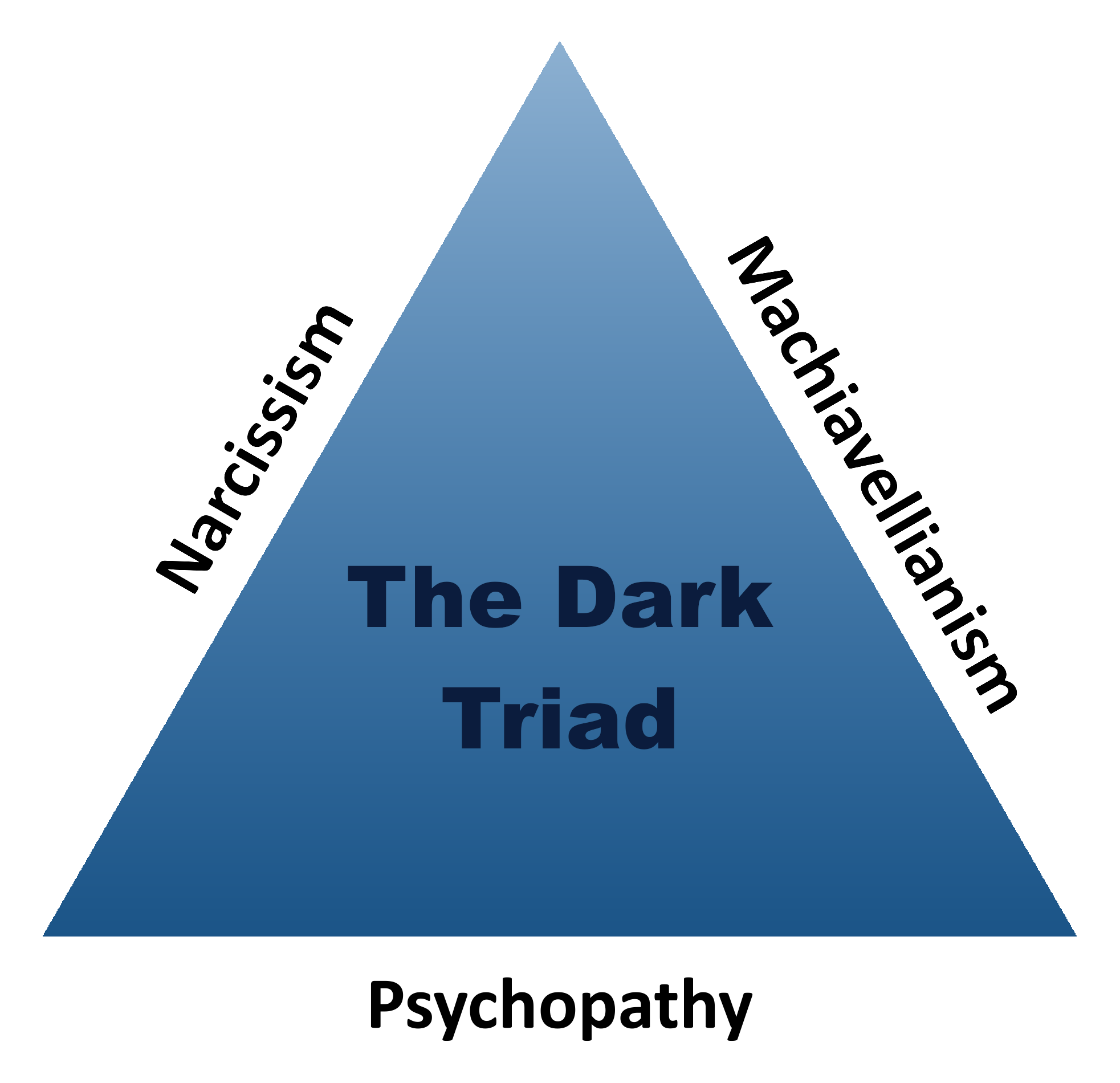|
Narcissistic Personality Inventory
The Narcissistic Personality Inventory (NPI) was developed in 1979 by Raskin and Hall, and since then, has become one of the most widely utilized personality measures for non-clinical levels of the trait narcissism. Since its initial development, the NPI has evolved from 220 items to the more commonly employed NPI-40 (1984) and NPI-16 (2006), as well as the novel NPI-1 inventory (2014). Derived from the DSM-III criteria for Narcissistic personality disorder (NPD), the NPI has been employed heavily by personality and social psychology researchers. The NPI is not intended for use in diagnosing Narcissistic personality disorder. Rather, it is often said to measure "normal" or "subclinical" (borderline) narcissism (i.e., in people who score very high on the NPI do not necessarily meet all criteria for diagnosis with NPD). Psychometric properties The psychometric properties of the NPI have been continually investigated since its creation in 1979, both by original creators Raskin and ... [...More Info...] [...Related Items...] OR: [Wikipedia] [Google] [Baidu] |
Narcissism
Narcissism is a self-centered personality style characterized as having an excessive interest in one's physical appearance or image and an excessive preoccupation with one's own needs, often at the expense of others. Narcissism exists on a continuum that ranges from normal to abnormal personality expression. While there exists normal, healthy levels of narcissism in humans, there are also more extreme levels of narcissism, being seen particularly in people who are self-absorbed, or people who have a pathological mental illness like narcissistic personality disorder. It is one of the traits featured in the dark triad, along with Machiavellianism and subclinical psychopathy. History of thought The term "narcissism" comes from the Roman poet Ovid's '' Metamorphoses'', written in the year 8 AD. Book III of the poem tells the mythical story of a handsome young man, Narcissus, who spurns the advances of many potential lovers. When Narcissus rejects the nymph Echo, who was cur ... [...More Info...] [...Related Items...] OR: [Wikipedia] [Google] [Baidu] |
Narcissistic Personality Disorder
Narcissistic personality disorder (NPD) is a personality disorder characterized by a life-long pattern of exaggerated feelings of self-importance, an excessive need for admiration, a diminished ability or unwillingness to empathize with others' feelings, and interpersonally exploitative behavior. Narcissistic personality disorder is one of the sub-types of the broader category known as personality disorders. It is often comorbid with other mental disorders and associated with significant functional impairment and psychosocial disability. Personality disorders are a class of mental disorders characterized by enduring and inflexible maladaptive patterns of behavior, cognition, and inner experience, exhibited across many contexts and deviating from those accepted by any culture. These patterns develop by early adulthood, and are associated with significant distress or impairment. Criteria for diagnosing personality disorders are listed in the fifth chapter of the '' Interna ... [...More Info...] [...Related Items...] OR: [Wikipedia] [Google] [Baidu] |
Five Factor Model
The Big Five personality traits is a suggested taxonomy, or grouping, for personality traits, developed from the 1980s onward in psychological trait theory. Starting in the 1990s, the theory identified five factors by labels, for the US English speaking population, typically referred to as: * openness to experience (inventive/curious vs. consistent/cautious) *conscientiousness (efficient/organized vs. extravagant/careless) *extraversion (outgoing/energetic vs. solitary/reserved) * agreeableness (friendly/compassionate vs. critical/rational) * neuroticism (sensitive/nervous vs. resilient/confident) When factor analysis (a statistical technique) is applied to personality survey data, it reveals semantic associations: some words used to describe aspects of personality are often applied to the same person. For example, someone described as conscientious is more likely to be described as "always prepared" rather than "messy". These associations suggest five broad dimensions used in ... [...More Info...] [...Related Items...] OR: [Wikipedia] [Google] [Baidu] |
Dark Triad
The dark triad is a psychological theory of personality, first published by Delroy L. Paulhus and Kevin M. Williams in 2002, that describes three notably offensive, but non-pathological personality types: Machiavellianism, sub-clinical narcissism, and sub-clinical psychopathy. Each of these personality types are called ''dark'' because each is considered to contain malevolent qualities. All three dark triad traits are conceptually distinct although empirical evidence shows them to be overlapping. They are associated with a callous–manipulative interpersonal style. * Narcissism is characterized by grandiosity, pride, egotism, and a lack of empathy. * Machiavellianism is characterized by manipulation and exploitation of others, an absence of morality, unemotional callousness, and a higher level of self-interest. * Psychopathy is characterized by continuous antisocial behavior, impulsivity, selfishness, callous and unemotional traits (CU), and remorselessness. High scores i ... [...More Info...] [...Related Items...] OR: [Wikipedia] [Google] [Baidu] |
Machiavellianism (psychology)
In the field of personality psychology, Machiavellianism is a personality trait centered on manipulativeness, callousness, and indifference to morality.Jones, D. N., & Paulhus, D. L. (2009). Machiavellianism. In M. R. Leary & R. H. Hoyle (Eds.), ''Handbook of individual differences in social behavior'' (pp. 93–108). New York: The Guilford Press. Though it has nothing to do with the historical figure or his political thought, the trait is named after the political theorist Niccolò Machiavelli, as psychologists Richard Christie and Florence Geis used edited and truncated statements inspired by his works to study variations in human behaviors. Their ''Mach IV'' test, a 20-question, Likert-scale personality survey, became the standard self-assessment tool and scale of the Machiavellianism construct. Those who score high on the scale (High Machs) are more likely to have a high level of deceitfulness and a cynical, unempathetic temperament. It is one of the dark triad traits, alo ... [...More Info...] [...Related Items...] OR: [Wikipedia] [Google] [Baidu] |
Psychopathy
Psychopathy, sometimes considered synonymous with sociopathy, is characterized by persistent antisocial behavior, impaired empathy and remorse, and bold, disinhibited, and egotistical traits. Different conceptions of psychopathy have been used throughout history that are only partly overlapping and may sometimes be contradictory. Hervey M. Cleckley, an American psychiatrist, influenced the initial diagnostic criteria for antisocial personality reaction/disturbance in the '' Diagnostic and Statistical Manual of Mental Disorders'' (''DSM''), as did American psychologist George E. Partridge. The ''DSM'' and '' International Classification of Diseases'' (ICD) subsequently introduced the diagnoses of antisocial personality disorder (ASPD) and dissocial personality disorder (DPD) respectively, stating that these diagnoses have been referred to (or include what is referred to) as psychopathy or sociopathy. The creation of ASPD and DPD was driven by the fact that many of the ... [...More Info...] [...Related Items...] OR: [Wikipedia] [Google] [Baidu] |
Self-esteem
Self-esteem is confidence in one's own worth or abilities. Self-esteem encompasses beliefs about oneself (for example, "I am loved", "I am worthy") as well as emotional states, such as triumph, despair, pride, and shame. Smith and Mackie (2007) defined it by saying "The self-concept is what we think about the self; self-esteem, is the positive or negative evaluations of the self, as in how we feel about it." Self-esteem is an attractive psychological construct because it predicts certain outcomes, such as academic achievement, happiness, satisfaction in marriage and relationships, and criminal behavior. Self-esteem can apply to a specific attribute or globally. Psychologists usually regard self-esteem as an enduring personality characteristic (''trait self-esteem''), though normal, short-term variations (''state self-esteem'') also exist. Synonyms or near-synonyms of self-esteem include: self-worth, self-regard, self-respect, and self-integrity. History The concept of self-este ... [...More Info...] [...Related Items...] OR: [Wikipedia] [Google] [Baidu] |
Pathological Narcissism Inventory
Pathology is the study of the causes and effects of disease or injury. The word ''pathology'' also refers to the study of disease in general, incorporating a wide range of biology research fields and medical practices. However, when used in the context of modern medical treatment, the term is often used in a narrower fashion to refer to processes and tests that fall within the contemporary medical field of "general pathology", an area which includes a number of distinct but inter-related medical specialties that diagnose disease, mostly through analysis of tissue, cell, and body fluid samples. Idiomatically, "a pathology" may also refer to the predicted or actual progression of particular diseases (as in the statement "the many different forms of cancer have diverse pathologies", in which case a more proper choice of word would be " pathophysiologies"), and the affix ''pathy'' is sometimes used to indicate a state of disease in cases of both physical ailment (as in cardiom ... [...More Info...] [...Related Items...] OR: [Wikipedia] [Google] [Baidu] |
Narcissistic Grandiosity Scale
Narcissism is a self-centered personality style characterized as having an excessive interest in one's physical appearance or image and an excessive preoccupation with one's own needs, often at the expense of others. Narcissism exists on a continuum that ranges from normal to abnormal personality expression. While there exists normal, healthy levels of narcissism in humans, there are also more extreme levels of narcissism, being seen particularly in people who are self-absorbed, or people who have a pathological mental illness like narcissistic personality disorder. It is one of the traits featured in the dark triad, along with Machiavellianism and subclinical psychopathy. History of thought The term "narcissism" comes from the Roman poet Ovid's ''Metamorphoses'', written in the year 8 AD. Book III of the poem tells the mythical story of a handsome young man, Narcissus, who spurns the advances of many potential lovers. When Narcissus rejects the nymph Echo, who was curse ... [...More Info...] [...Related Items...] OR: [Wikipedia] [Google] [Baidu] |
Psychological Entitlement Scale
Psychology is the scientific study of mind and behavior. Psychology includes the study of conscious and unconscious phenomena, including feelings and thoughts. It is an academic discipline of immense scope, crossing the boundaries between the natural and social sciences. Psychologists seek an understanding of the emergent properties of brains, linking the discipline to neuroscience. As social scientists, psychologists aim to understand the behavior of individuals and groups.Fernald LD (2008)''Psychology: Six perspectives'' (pp.12–15). Thousand Oaks, CA: Sage Publications.Hockenbury & Hockenbury. Psychology. Worth Publishers, 2010. Ψ (''psi''), the first letter of the Greek word ''psyche'' from which the term psychology is derived (see below), is commonly associated with the science. A professional practitioner or researcher involved in the discipline is called a psychologist. Some psychologists can also be classified as behavioral or cognitive scientists. Some psyc ... [...More Info...] [...Related Items...] OR: [Wikipedia] [Google] [Baidu] |
Five Factor Model
The Big Five personality traits is a suggested taxonomy, or grouping, for personality traits, developed from the 1980s onward in psychological trait theory. Starting in the 1990s, the theory identified five factors by labels, for the US English speaking population, typically referred to as: * openness to experience (inventive/curious vs. consistent/cautious) *conscientiousness (efficient/organized vs. extravagant/careless) *extraversion (outgoing/energetic vs. solitary/reserved) * agreeableness (friendly/compassionate vs. critical/rational) * neuroticism (sensitive/nervous vs. resilient/confident) When factor analysis (a statistical technique) is applied to personality survey data, it reveals semantic associations: some words used to describe aspects of personality are often applied to the same person. For example, someone described as conscientious is more likely to be described as "always prepared" rather than "messy". These associations suggest five broad dimensions used in ... [...More Info...] [...Related Items...] OR: [Wikipedia] [Google] [Baidu] |
Eysenck Personality Questionnaire
In psychology, the Eysenck Personality Questionnaire (EPQ) is a questionnaire to assess the personality traits of a person. It was devised by psychologists Hans Jürgen Eysenck and Sybil B. G. Eysenck. Hans Eysenck's theory is based primarily on physiology and genetics. Although he was a behaviorist who considered learned habits of great importance, he believed that personality differences are determined by genetic inheritance. He is, therefore, primarily interested in temperament. In devising a temperament-based theory, Eysenck did not exclude the possibility that some aspects of personality are learned, but left the consideration of these to other researchers. Dimensions Eysenck initially conceptualized personality as two biologically-based independent dimensions of temperament, ''E'' and ''N'', measured on a continuum, but then extending this to include a third, ''P''. E – Extraversion/Introversion: Extraversion is characterized by being outgoing, talkative, high on positi ... [...More Info...] [...Related Items...] OR: [Wikipedia] [Google] [Baidu] |




.jpg)

